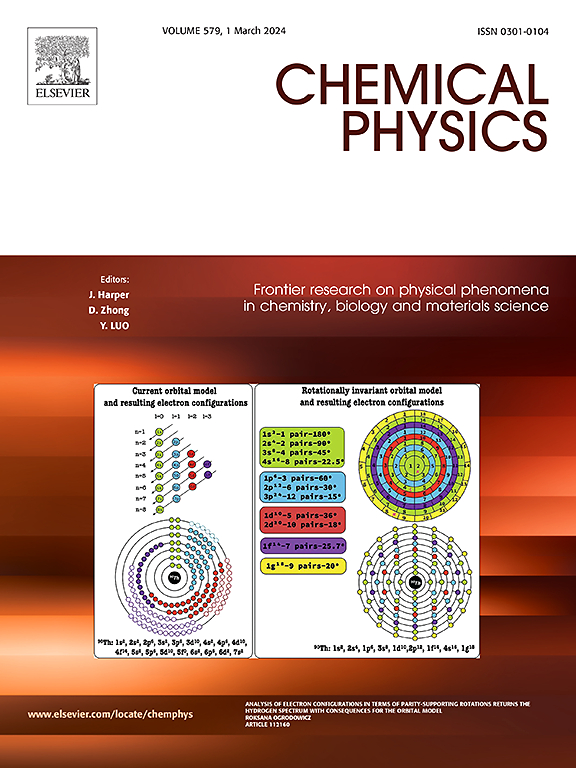Influence of central heteroatom and donor or acceptor groups on the linear and nonlinear optical properties of epindolidione derivatives using DFT study
IF 2
3区 化学
Q4 CHEMISTRY, PHYSICAL
引用次数: 0
Abstract
The core E, obtained on replacing one -NH- with -S- demonstrates the lowest energy gap among observed cores, with values of 3.26 eV in B3LYP and 5.63 eV in CAM-B3LYP. This small energy gap between the HOMO and LUMO facilitates enhanced charge transfer. Among cores A, B, and C, N(CH3)2-substituted thioepindolidiones (core B) shows the highest vertical excitation, while the N(CH3)2-substituted thiazaepindolidione (core E) ranks highest among the cores D, E and F. Core B exhibits the greatest linear polarizability (α), while core E has the highest first-order hyperpolarizability, making them the suitable candidates for nonlinear optical (NLO) applications. Cores A, B, and C, with their symmetric structures, have zero dipole moment, effectively cancelling out each other’s dipoles. Oxoepindolidione shows excellent stability, demonstrated by higher ionization potential (IP), hardness (η), hyperharness (Γ), and energy gap. NO2 substitution generally provides the best performance across most density functional theory (DFT) descriptors.

求助全文
约1分钟内获得全文
求助全文
来源期刊

Chemical Physics
化学-物理:原子、分子和化学物理
CiteScore
4.60
自引率
4.30%
发文量
278
审稿时长
39 days
期刊介绍:
Chemical Physics publishes experimental and theoretical papers on all aspects of chemical physics. In this journal, experiments are related to theory, and in turn theoretical papers are related to present or future experiments. Subjects covered include: spectroscopy and molecular structure, interacting systems, relaxation phenomena, biological systems, materials, fundamental problems in molecular reactivity, molecular quantum theory and statistical mechanics. Computational chemistry studies of routine character are not appropriate for this journal.
 求助内容:
求助内容: 应助结果提醒方式:
应助结果提醒方式:


